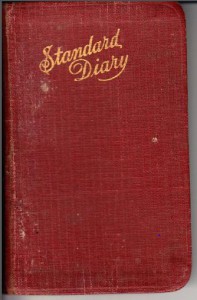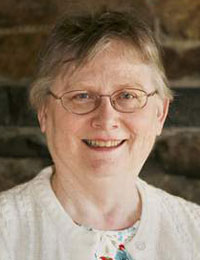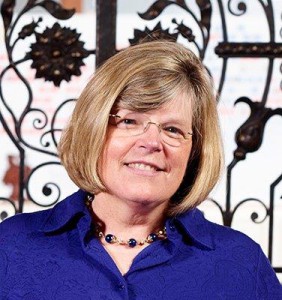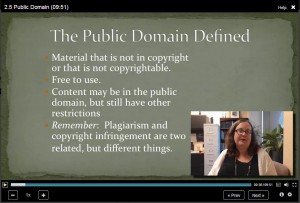 If your family is anything like mine, you heard plenty of stories about your great-grandparents from your parents. From those stories I have been able to get a sense of their personalities and how they lived, but it is a view limited to how my parents knew them as their grandparents. Learning who your ancestors were as young adults is difficult, since most standard documents do not reveal an individual’s personality. My mother has a genealogical file on each of my relatives, where she keeps news clippings or other documents pertaining to their lives, which I often refer to while I am researching my family. During my last visit home, while searching through her files, I discovered the diary of my great-grandmother, Gladys Tompkins, from the year 1924. Continue reading Insights from my great-grandmother’s diary
If your family is anything like mine, you heard plenty of stories about your great-grandparents from your parents. From those stories I have been able to get a sense of their personalities and how they lived, but it is a view limited to how my parents knew them as their grandparents. Learning who your ancestors were as young adults is difficult, since most standard documents do not reveal an individual’s personality. My mother has a genealogical file on each of my relatives, where she keeps news clippings or other documents pertaining to their lives, which I often refer to while I am researching my family. During my last visit home, while searching through her files, I discovered the diary of my great-grandmother, Gladys Tompkins, from the year 1924. Continue reading Insights from my great-grandmother’s diary
Tag Archives: Critical Analysis
An unexpected helping hand

Tracing one’s family back to their country of origin can be daunting; often the birthplaces found on census records are just countries, with no indication given of province or county. Therefore, when I found my great-great-grandfather on the 1920 United States Federal Census, I groaned inwardly when I read the birthplaces of his parents: Scotland and Ireland.
William Muir’s parents were a Robert and Margaret Muir. As I noted yesterday, I found them in the 1860 United States Federal Census living in Charlestown, Massachusetts. Continue reading An unexpected helping hand
Finding William Muir

When I began working as a genealogist, my mother expressed great interest in learning more about her father’s family: the Muirs. While she had much information on her mother’s side of the family, which was quite large, she knew little about her father’s side of the family beyond her grandparents, so I began there. Continue reading Finding William Muir
Further thoughts on genealogical writing
 For the past several years NEHGS has been giving seminars on writing and publishing a family history. These have been very popular, and as a result, Penny Stratton and I refocused the two previous NEHGS writing guides to reflect the contents of the seminars. The resulting book is the Guide to Genealogical Writing: How to Write and Publish Your Family History (Boston: NEHGS, 2014), just released. In twelve chapters this Guide covers everything from preparing a short informal booklet up to publishing an elaborate compiled genealogy. Chapters on writing for the Register and for American Ancestors were adapted from the two previous guides. To help readers visualize some of our specific examples, we included plenty of illustrations, most of them from recently published Newbury Street Press books. Continue reading Further thoughts on genealogical writing
For the past several years NEHGS has been giving seminars on writing and publishing a family history. These have been very popular, and as a result, Penny Stratton and I refocused the two previous NEHGS writing guides to reflect the contents of the seminars. The resulting book is the Guide to Genealogical Writing: How to Write and Publish Your Family History (Boston: NEHGS, 2014), just released. In twelve chapters this Guide covers everything from preparing a short informal booklet up to publishing an elaborate compiled genealogy. Chapters on writing for the Register and for American Ancestors were adapted from the two previous guides. To help readers visualize some of our specific examples, we included plenty of illustrations, most of them from recently published Newbury Street Press books. Continue reading Further thoughts on genealogical writing
Gravestones and name changes
 Anyone who has researched genealogy knows that names can be spelled many different ways across a variety of records. I once found twelve different spellings of one family’s surname during a research project here at NEHGS. Recently, in my own personal family research, I’ve realized that another problem can occur when names are shortened across the generations. Continue reading Gravestones and name changes
Anyone who has researched genealogy knows that names can be spelled many different ways across a variety of records. I once found twelve different spellings of one family’s surname during a research project here at NEHGS. Recently, in my own personal family research, I’ve realized that another problem can occur when names are shortened across the generations. Continue reading Gravestones and name changes
“Dam humbug”!

Among my husband’s family papers is a letter, dated 25 October 1873, from John Dill to his mother, Susan (Berry) (Dill) Gibbons. John had left the family home in Springfield, Illinois, earlier that year to work on the railroad in Texas, and he was alarmed about the impending marriage of his younger sister, Ida Dill:
This thing of Ida getting acquainted Courting and marrying all in about a month I do not believe in and more than it is a dam humbug. . . . How do you know what that fellow is or has bin you cant find out so much in such a little time. Continue reading “Dam humbug”!
Cause of death: a genealogical clue

No document is more pivotal to genealogical work than a death certificate. The reason for its importance goes far beyond simply providing researchers with a date of death for an individual. Perhaps just as critical to understanding family history as the date of death is the cause of death.
Records of deaths were originally kept by churches in the colonial period, but eventually these records led to the development of legal documents which served a similar purpose. The Massachusetts Bay Colony made courts responsible for death records in 1639, going against the traditional European model of having churches record deaths as well as baptisms and marriages. Continue reading Cause of death: a genealogical clue
Cheat Sheets: Part Four
 The first fourteen steps in my process for creating entries for the Early New England Families Study Project are covered in three previous posts, beginning here:
The first fourteen steps in my process for creating entries for the Early New England Families Study Project are covered in three previous posts, beginning here:
15. Analysis. Many, many books have been written about genealogical analysis. I have just read the most recent, Bob Anderson’s Elements of Genealogical Analysis, and highly recommend it with one caveat – it is written by a left-brained genealogist. Speaking as a right-brained genealogist, I know some readers may find themselves grumbling about “overkill,” but remember that Bob is examining the process of genealogical analysis on the cellular level. Continue reading Cheat Sheets: Part Four
Genealogical complexity: writing it up
 Yesterday, Scott wrote about genealogical complexity: addressing all the different ways we make modern families and write about them genealogically. As it turns out, many family historians ask questions about just such things:
Yesterday, Scott wrote about genealogical complexity: addressing all the different ways we make modern families and write about them genealogically. As it turns out, many family historians ask questions about just such things:
- How do I talk about a child born out of wedlock?
- Do I list my sister’s stepchildren?
As Scott said, we think you should report it all – without judgment. Well, what does that look like? The first place a child appears in a Register-style sketch is in a child list, and it’s the child-intro line where you give the salient information. Here are some examples: Continue reading Genealogical complexity: writing it up
A primer on current copyright law

In this information age, many of us worry about others sharing pieces we have written, scanned, or recorded. What we may not consider, but should, is whether we ourselves have the right to use, donate, or sell certain items.
Recently, I participated in a four-week online course on copyright (for teachers and librarians) via Duke University. Meanwhile, my colleague Sally Benny attended a two-day education session during the Society of American Archivists (SAA) conference in Washington, D.C. Continue reading A primer on current copyright law